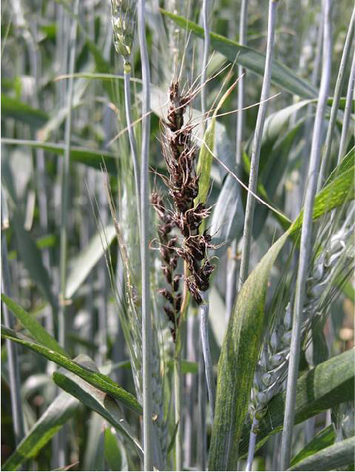Loose smut
Ustilago nuda, Ustilago tritici and Ustilago avenae
Biology
Flight blight is a purely seed-borne disease. In barley and wheat fly blight, infection occurs in the embryo. The source of infection is fly blight plants in the stand itself and in neighboring stands. Flight blight does not spread in the stand, but infects the grain plants of other plants. In oat fly blight, infection of seedlings occurs through spores on the seed.
Damage symptoms


Instead of ears/ panicles, black-brown to black spore deposits ("burnt ears/ panicles") are formed. These spore beds contain loose spores, which are spread by wind and rain until the bare spikelet/ panicle remains. No signs of infection are visible on the seed.
Last updated: 13.03.2024
automatically translated